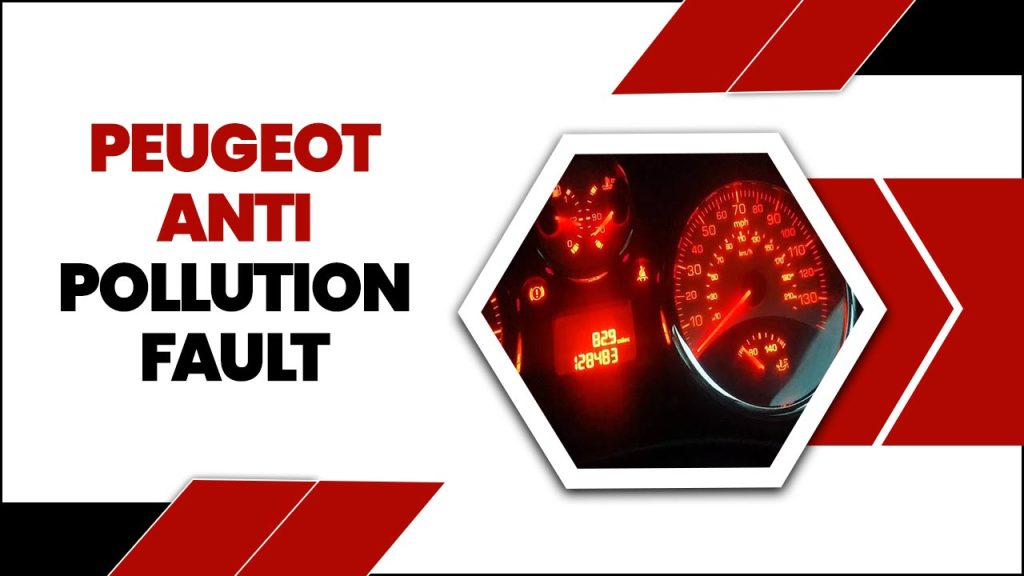The automobile industry has made remarkable strides in producing eco-friendly and sustainable vehicles in recent years. However, even with the most advanced technology and strict emission regulations, cars can still encounter issues that affect their environmental performance.
One such issue is the “Peugeot Anti Pollution Fault,” a common problem faced by Peugeot car owners. This fault is related to the vehicle’s anti-pollution system, which reduces harmful emissions and ensures compliance with emission standards. The warning message, often accompanied by a check engine light, can be alarming for Peugeot owners, and addressing it promptly is crucial to avoid any further complications.
Here, we will delve into the details of the Peugeot Anti Pollution Fault, its causes, and possible solutions, providing a comprehensive guide for Peugeot owners to understand and resolve this issue.
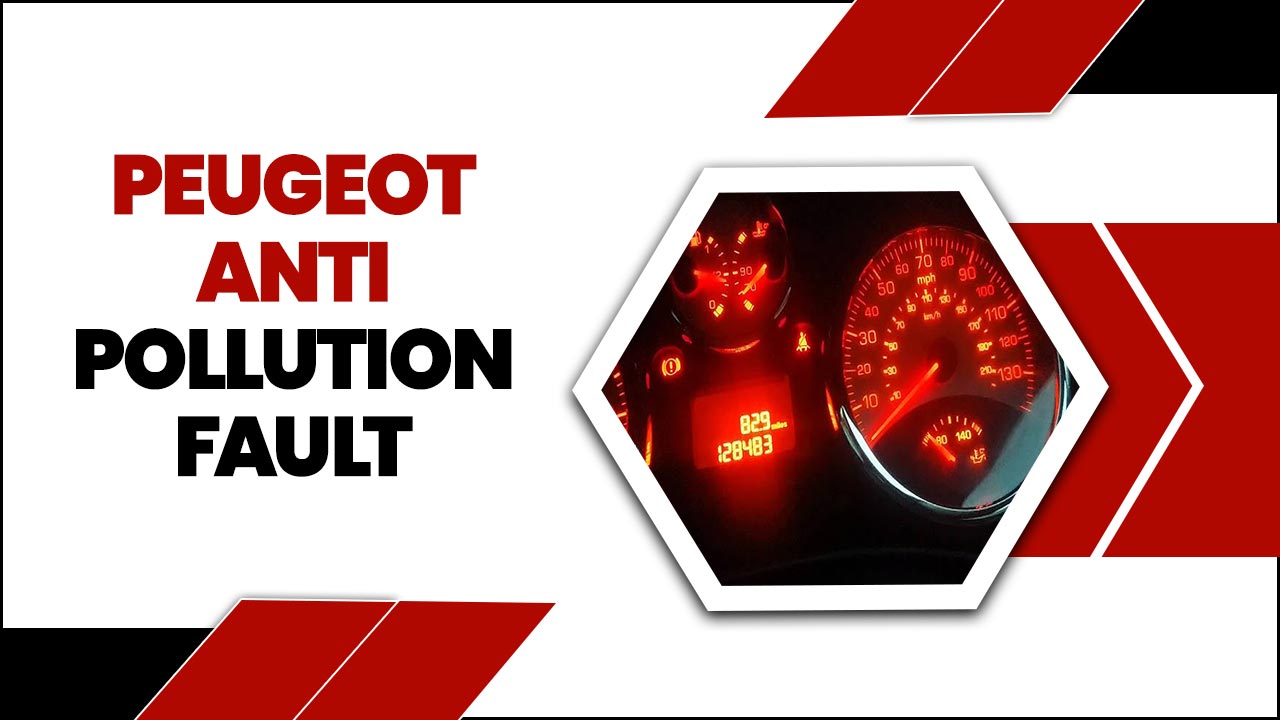
Peugeot Anti-Pollution Fault: What Does It Mean?
The “Peugeot Anti-Pollution Fault” message indicates a potential issue with the vehicle’s emissions control system. This fault can arise due to various factors, such as a malfunctioning oxygen sensor, faulty catalytic converter, or issues with the exhaust gas recirculation (EGR) system.
When this message appears, it’s essential to have the vehicle inspected by a qualified technician promptly. Ignoring this fault could lead to increased emissions, reduced fuel efficiency, and potential damage to the engine or emissions control components. Addressing the underlying cause of the fault is crucial to ensure the vehicle meets emission standards and operates efficiently.
4 Easy Steps On Peugeot Anti Pollution Fault
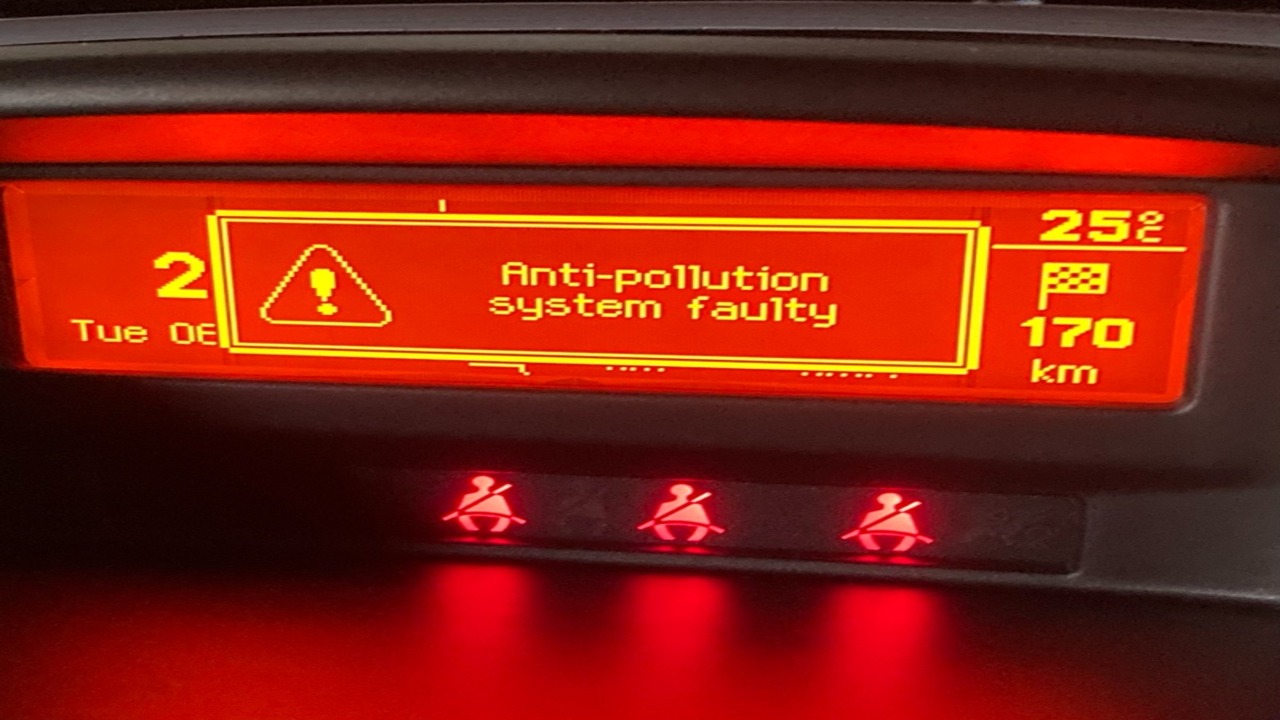
Peugeot, a renowned automobile manufacturer, has made significant strides in the automotive industry for decades. However, despite their reputation for quality and innovation, some Peugeot owners have encountered an issue known as the “Anti Pollution Fault.”
The Anti Pollution Fault is a warning message that appears on the vehicle’s dashboard, indicating a potential problem with the vehicle’s emission control system. Various factors, including a malfunctioning sensor, a clogged catalytic converter, or an issue with the exhaust system can cause this fault. Here are 4 easy steps to address the Peugeot Anti Pollution Fault:
1.Identify The Warning Signs
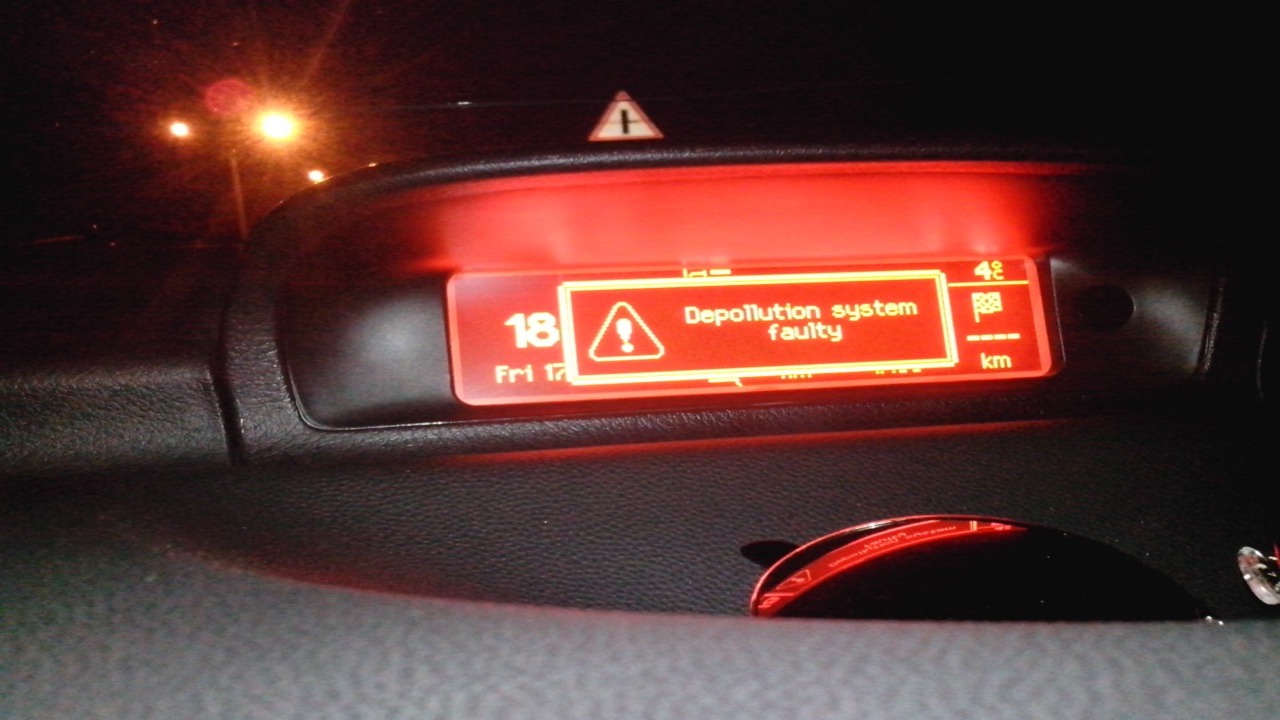
The Peugeot Anti-Pollution Fault warning typically appears on the dashboard and indicates a potential issue with the vehicle’s emissions system. Look out for symptoms such as loss of power, increased fuel consumption, or unusual exhaust emissions. Peugeot Anti Pollution Fault is a common issue many Peugeot car owners may encounter.
It is essential to identify the warning signs of this problem to take appropriate action. The first step in dealing with this issue is to be vigilant and observant of any signs that may indicate a potential Anti Pollution Fault. One of the warning signs to watch out for is the appearance of the “Anti Pollution Fault” warning light on the dashboard.
This light usually illuminates in yellow or orange and indicates that there is a problem with the vehicle’s emission control system. It is crucial not to ignore this warning light as it could signify a serious issue that requires immediate attention.
Another sign to be aware of is a decrease in engine performance. If you notice that your Peugeot is not running as smoothly as it used to or is exhibiting sluggish acceleration, it could be a symptom of an Anti Pollution Fault
2.Check The Basics
Before taking any further action, ensure that the gas cap is tightly sealed. A loose or faulty gas cap can trigger the Anti Pollution Fault warning. Also, inspect the air filter and spark plugs to ensure they are clean and in good condition. After encountering the Peugeot Anti Pollution Fault, the next step is to check the basics thoroughly.
This involves examining various components and systems that could contribute to the issue. Start by inspecting the air filter, ensuring that it is clean and free from any debris or obstruction. Next, examine the fuel system, checking for any leaks or clogs that could hinder the proper flow of fuel.
Additionally, it is crucial to assess the condition of the spark plugs, as worn-out or faulty plugs can affect the engine’s performance. Inspect the exhaust system for any signs of damage or blockages. A damaged or clogged exhaust can lead to poor emissions and trigger the anti-pollution fault.
Lastly, pay attention to the battery and electrical connections, ensuring they are secure and functioning correctly. By carefully examining these fundamental aspects. You can identify potential issues and take appropriate measures to resolve the Peugeot Anti Pollution Fault.
3.Scan For Error Codes

Use an OBD-II scanner to retrieve the specific error codes associated with the Anti Pollution Fault. These codes will provide valuable information about the nature of the problem and help guide your troubleshooting process. This crucial step involves connecting a diagnostic tool to the vehicle’s onboard computer system to retrieve any stored error codes or fault messages.
By doing this, technicians can gather invaluable information about the specific problem that triggered the anti-pollution fault warning. These error codes act as clues, guiding them towards the root cause of the issue. Once the codes are retrieved, they can be interpreted to determine the necessary repairs or further diagnostic steps required.
This step is essential in troubleshooting as it helps pinpoint the exact problem and facilitates a more accurate and efficient resolution. By conducting a comprehensive scan for error codes. The technicians can ensure that the correct course of action is taken to address the Peugeot Anti Pollution Fault and restore the vehicle’s performance and emissions back to optimal levels.
4.Address Common Causes
Some common causes of the Peugeot Anti Pollution Fault include faulty oxygen sensors, malfunctioning catalytic converters, or clogged diesel particulate filters.
The air filter filters out impurities and ensures that only clean air enters the engine. When the air filter becomes clogged, it can restrict airflow and disrupt the fuel-air mixture. Increasing pollution levels and triggering the anti-pollution fault. If the air filter is dirty, replace it with a new one to ensure proper airflow to the engine.
- Locate the MAF Sensor to Clean:
The MAF sensor is typically located between the air filter and the intake manifold. Use a MAF sensor cleaner to carefully clean the sensor. A dirty MAF sensor can send incorrect air flow data to the engine control unit (ECU).
- Clear the Fault Codes:
The diagnostic tool can help pinpoint specific problems related to the anti-pollution system, such as issues with the oxygen sensor, EGR valve, or catalytic converter. After addressing the identified issues, use the diagnostic tool to clear the fault codes and reset the warning light
Preventive Maintenance For Anti Pollution Fault
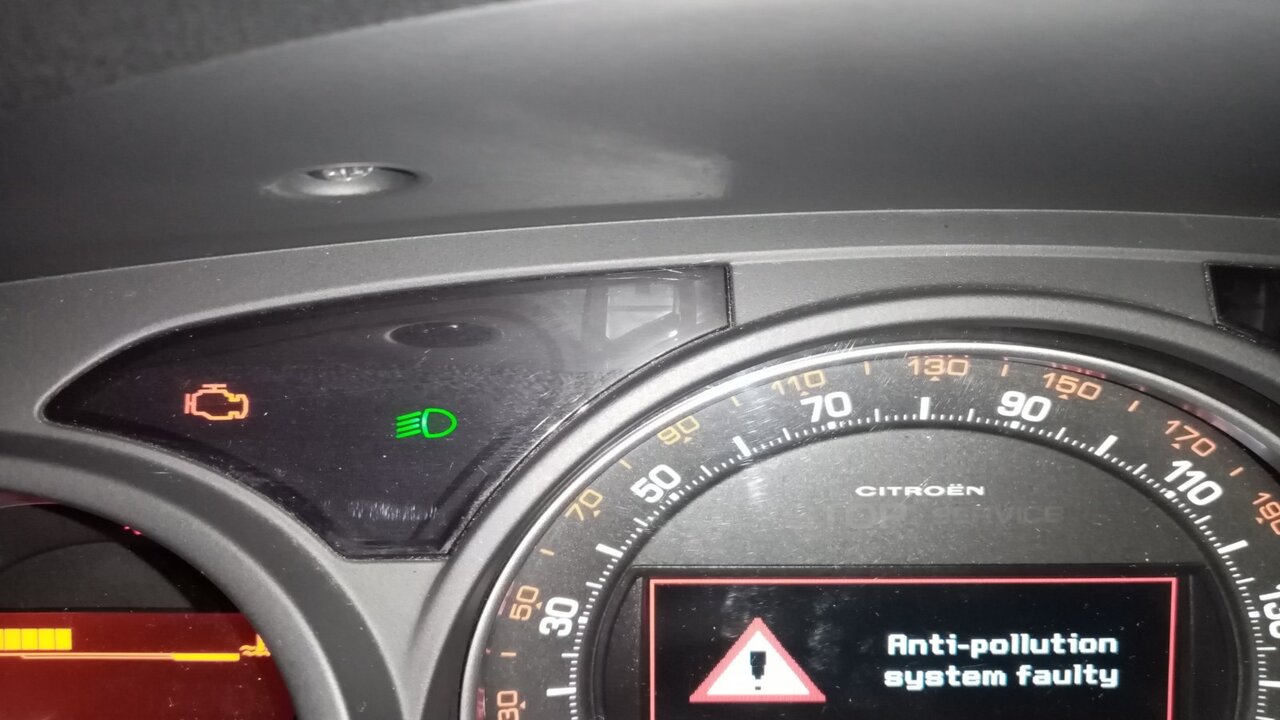
Addressing the issue with a sense of responsibility and professionalism is crucial regarding anti-pollution fault maintenance. Anti-pollution faults are a serious concern in today’s world, as the detrimental effects of pollution continue to threaten the environment and human health.
Therefore, individuals, organizations, and governments must prioritize maintaining and preventing such faults. Preventive maintenance for the Peugeot Anti Pollution Fault includes the following steps:
- Regularly Check And Replace The Air Filter: A clogged or dirty air filter can affect the engine’s performance and trigger the anti-pollution fault. Inspecting and replacing the air filter at regular intervals per the manufacturer’s guidelines is recommended.
- Ensure Proper Fuel Quality: Poor fuel can accumulate deposits in the engine and exhaust system, contributing to the anti-pollution fault. Using high-quality fuel and avoiding filling up at unreliable gas stations is essential.
- Keep The Engine Properly Tuned: Regularly servicing and maintaining the engine is crucial for preventing the occurrence of the anti-pollution fault. This includes checking and adjusting the ignition timing, fuel injection system, and other engine components as the manufacturer recommends.
- Monitor The Condition Of The Exhaust System: The exhaust system plays a vital role in reducing emissions.
Dealing With Persistent Anti Pollution Fault Issues
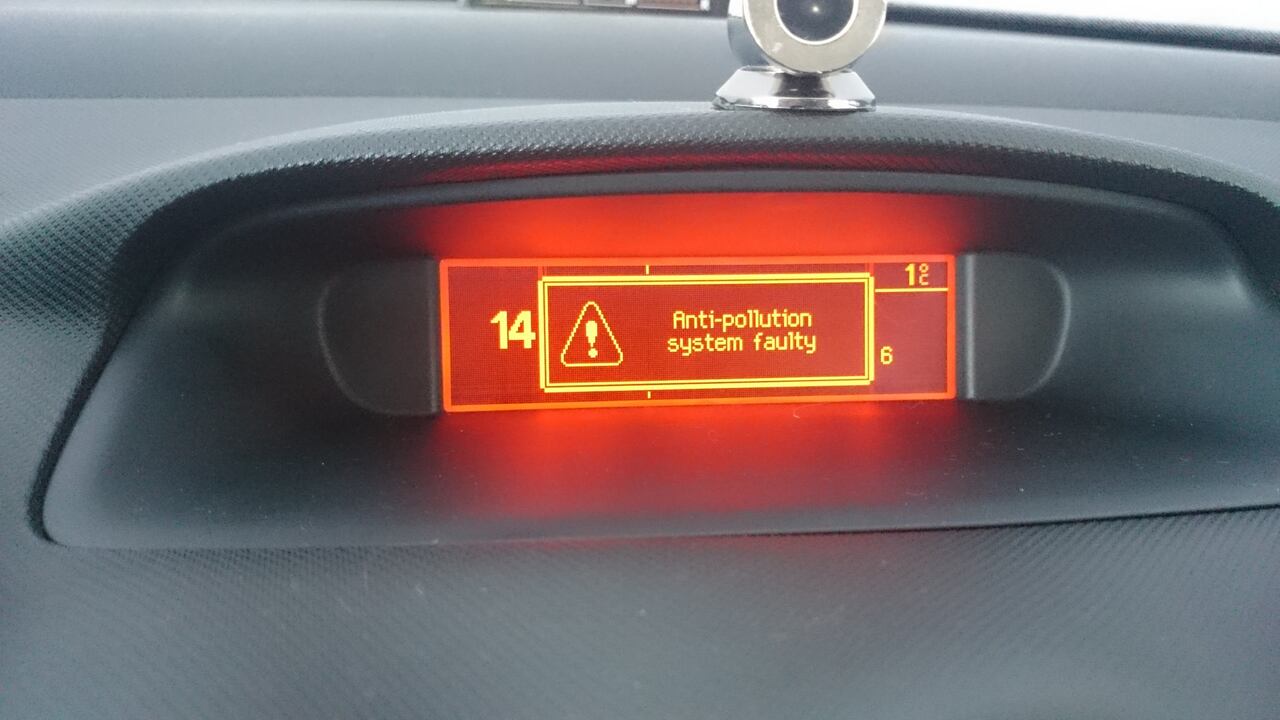
Peugeot, a renowned automobile manufacturer, has recently faced persistent issues related to anti-pollution faults in their vehicles. The company has been actively working towards addressing these concerns diligently and responsibly.
The anti-pollution fault issue has been a cause for concern among Peugeot owners, as it affects their vehicles’ performance and environmental sustainability. Dealing with persistent anti-pollution fault issues can be frustrating, especially with Peugeot vehicles. Here are some steps you can take to address this problem:
- Identify The Specific Fault: Use a diagnostic tool or visit a trusted mechanic to determine the exact nature of the anti-pollution fault. This will help you understand the underlying issue and guide your troubleshooting efforts.
- Check The Exhaust System: Inspect the exhaust system for leaks, damage, or blockages. These issues can trigger the anti-pollution fault warning. If you find any problems, repair or replace the affected components as necessary.
- Clean Or Replace The Air Filter: A clogged or dirty air filter can contribute to anti-pollution fault issues. Remove the air filter and clean it thoroughly, or replace it with a new one, depending on its condition.
Conclusion
The Peugeot anti pollution fault is a common issue that many drivers have experienced. While it can be frustrating and concerning, it is important to have the issue diagnosed and addressed by a professional mechanic.
By staying on top of regular maintenance and promptly addressing any warning lights or fault codes, you can help ensure the longevity and efficiency of your Peugeot vehicle. Always follow the recommended maintenance schedule and seek a trusted mechanic for any necessary repairs. With proper care and attention, you can continue to enjoy the performance and reliability of your Peugeot for years to come.
FAQs
1. What does an anti-pollution fault mean to Peugeot?
Anti-pollution fault” is a common warning message on Peugeot cars. It usually indicates a problem with the vehicle’s emission control system, which could be caused by issues such as a faulty sensor, clogged exhaust system, or malfunctioning catalytic converter.
2.Can You Still Drive With Anti Pollution Fault?
Driving with an anti-pollution fault is generally not recommended as it could indicate a potential issue with your vehicle’s emissions system. Driving with this fault could lead to further damage and potentially worsen emissions, resulting in a failing emissions test or a fine.
3.What Does Anti Pollution Warning Light Mean?
Ans: The anti-pollution warning light typically indicates a vehicle emissions system problem. This could be due to a malfunctioning sensor, a clogged filter, or a more serious issue. It is important to address the issue as soon as possible, as continued driving with the warning light on could cause damage to the vehicle or result in higher emissions.
4.What Is The Code For The Anti Pollution Fault On A Peugeot 207?
The code for the anti-pollution fault on a Peugeot 207 can vary depending on the issue. It is recommended to use a diagnostic tool to read the fault codes from the car’s engine control unit (ECU) for an accurate diagnosis.
5.Is Anti Pollution Fault Serious?
An anti-pollution fault can be serious as it indicates a vehicle emissions system problem. This fault can affect the performance and efficiency of the engine and potentially lead to increased emissions and environmental damage.
6.How Do You Open The Fuel Cap On A Skoda Octavia Tdi?
To open the fuel cap on a Skoda Octavia TDI, ensure the vehicle is stationary with the engine turned off. Locate the fuel cap release lever, typically located on the driver’s side door panel or dashboard. Pull the lever to release the fuel cap, then twist it counterclockwise to open.
Be cautious of any illuminated engine management or fault lights, as they may indicate issues with the diesel engine, fuel pump, or other components. Additionally, ensure the vehicle is in neutral or 4th gear for safety.
7.What Causes A Check Engine Light To Come On In A Car?
Several factors can trigger a check engine light in a car, including issues with the engine management system, lambda sensor malfunction, or a faulty head gasket.
These problems can arise in vehicles like Land Rover and Peugeot models. A visit to a dealership for diagnostics can pinpoint the exact cause, ensuring timely repairs to maintain vehicle performance and reliability.
8.How Do You Reset The Antipollution Fault On Peugeot?
To reset the antipollution fault on a Peugeot, diagnose the issue using an OBD-II scanner to retrieve error codes. Address common issues like a faulty EGR valve or spark plug. Once fixed, reset the fault codes using the scanner or by disconnecting the battery. Ensure the engine warning light is off for the anti pollution system to function properly.
9.Why Does A Check Engine Light Come On After Driving For A While?
A check engine light may illuminate after driving due to various reasons, including an electrical fault, loose fuel cap, or issues with the gasoline system. Commonly, it indicates problems with the fuel tank or petrol-related components. To address concerns promptly, consult a Peugeot dealer for diagnostics and necessary repairs to ensure optimal vehicle performance and safety.
10.What Does It Mean When The Pollution Light Comes On?
When the pollution light comes on, it indicates a potential issue with the vehicle’s emissions control system. This could be due to various factors such as a malfunctioning oxygen sensor, faulty catalytic converter, or problems with the exhaust gas recirculation system. It’s crucial to address this promptly to ensure compliance with emission standards and maintain vehicle performance.
11.What Is The Common Problem With A Peugeot 207?
One common problem with the Peugeot 207 is electrical issues, particularly related to the power steering system and central locking. Additionally, some owners report issues with the timing chain, resulting in engine noise or failure. Routine maintenance and prompt attention to any warning signs can help mitigate these common problems and ensure reliable performance.


